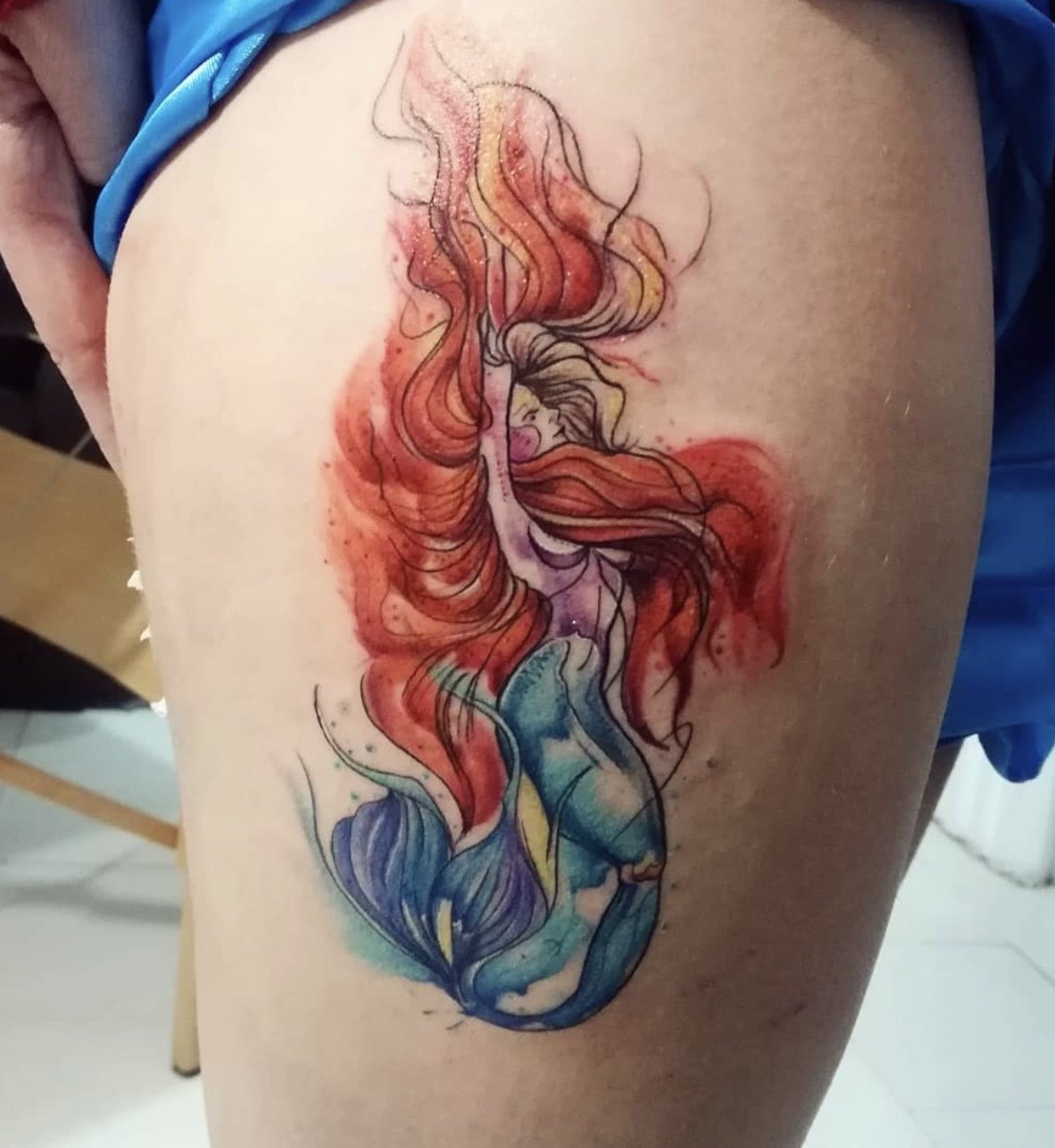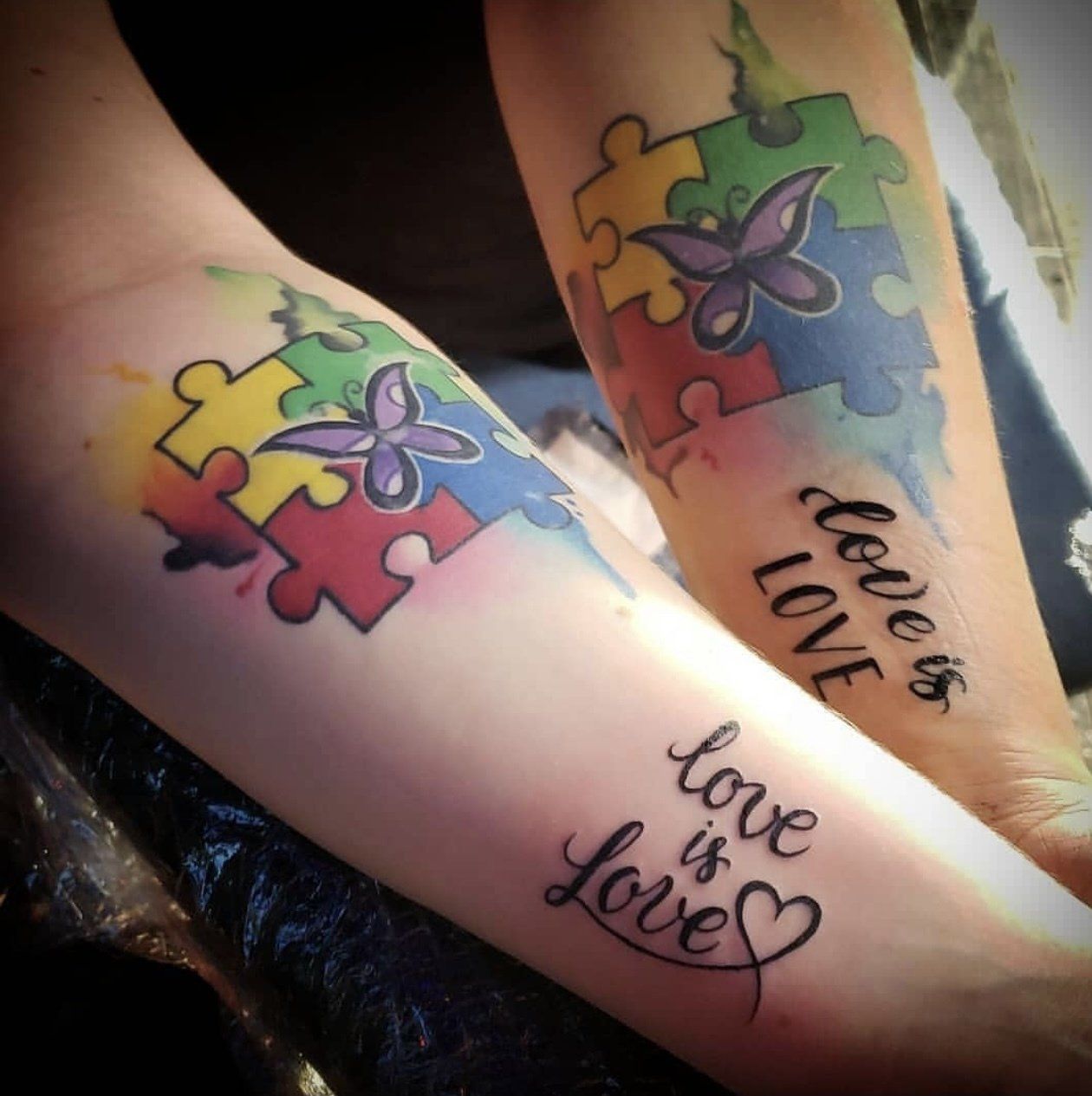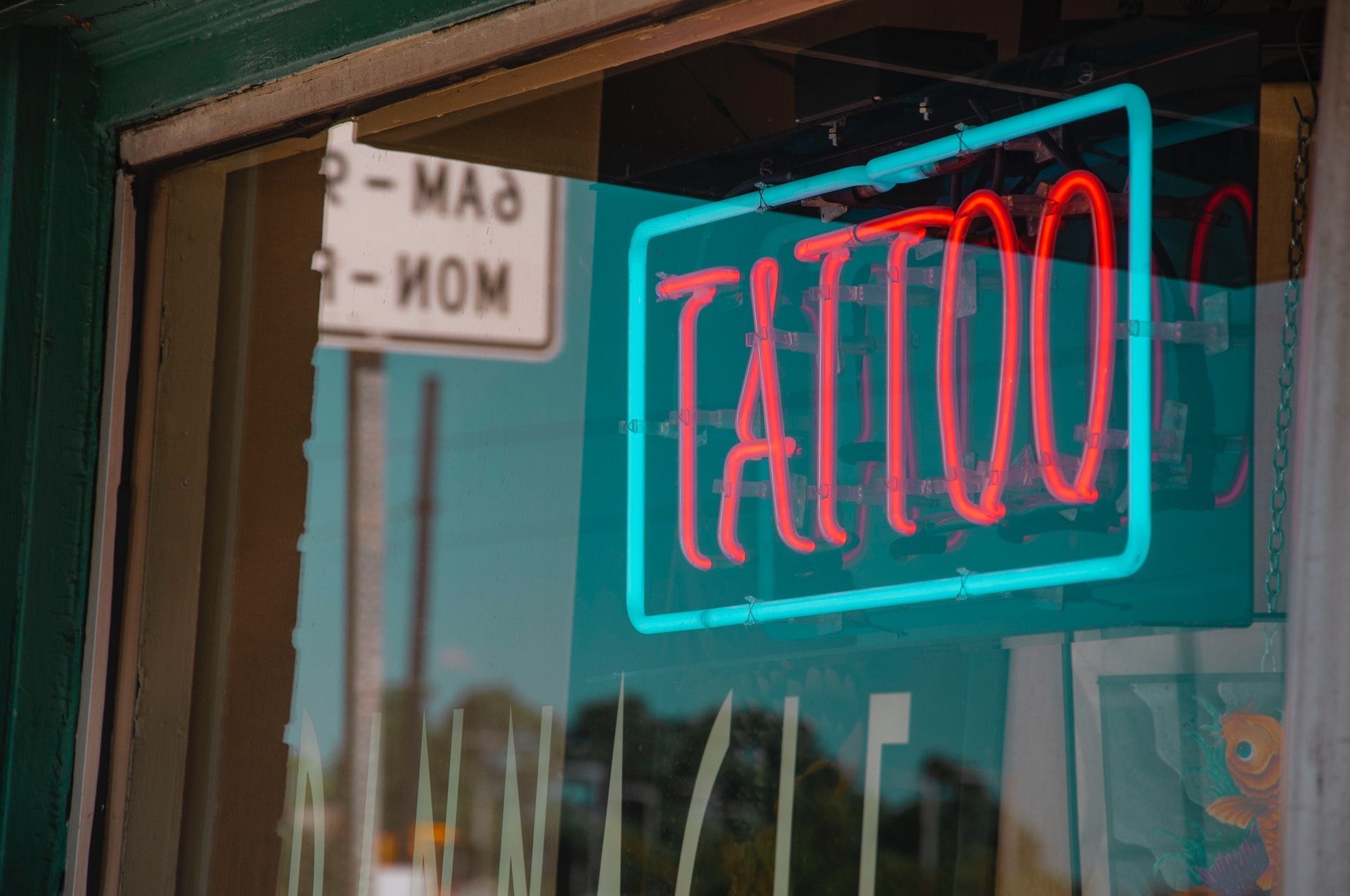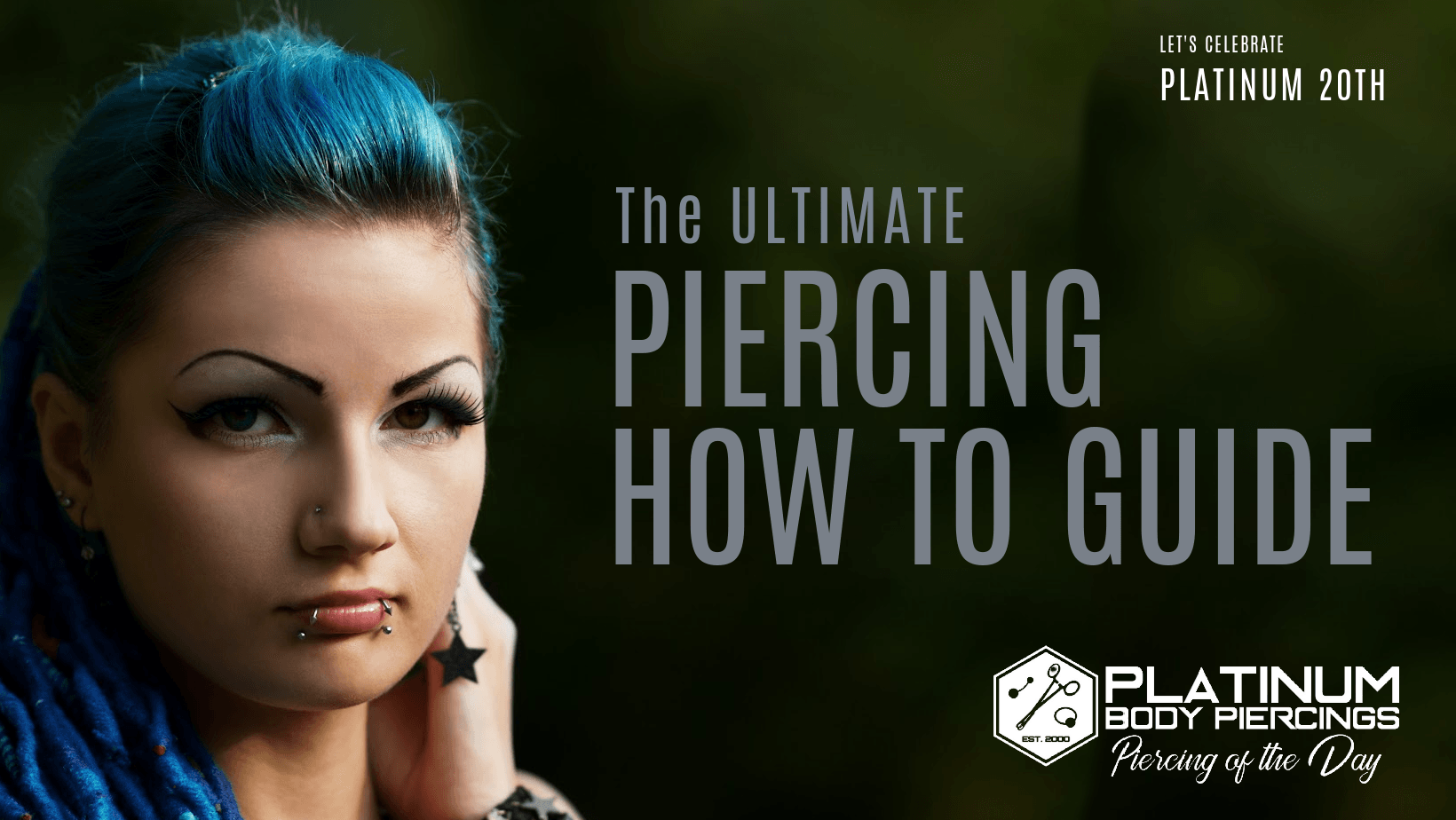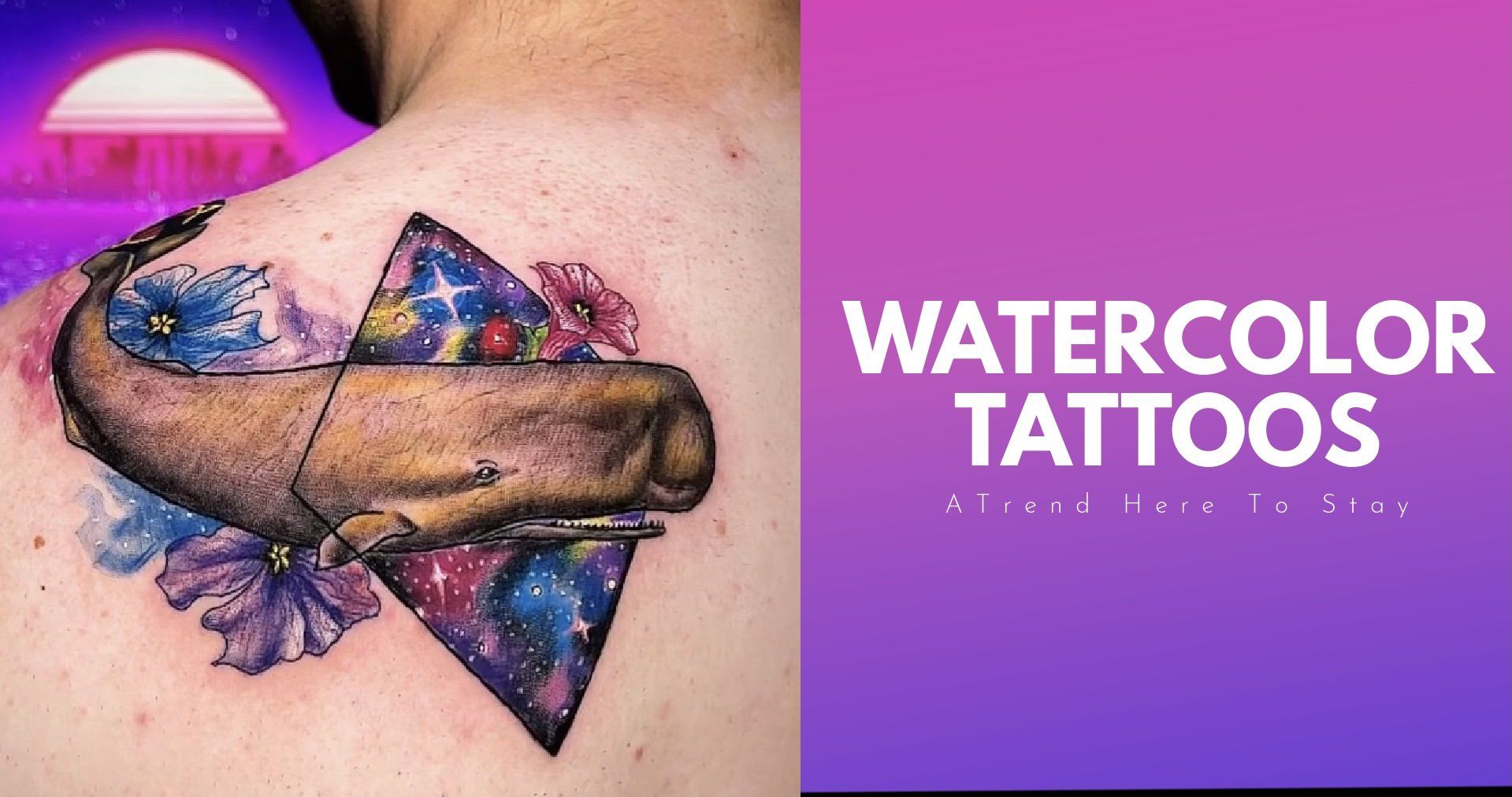
The Watercolor tattoo style is unique and vibrant; it is the reason the trend is growing fast within the tattoo community. So if you are thinking of hopping on this unique work of body art, read this article till the end, as we help you to explore the watercolor tattoo's origins, techniques, professional artists, and aging-associated with this tattooing technique
● The Watercolor body art is inspired by the actual watercolor painting. The painting comes from an ancient background that uses natural pigments found on earth.
● Many popular and experienced watercolor painters are employed as a tattooist, as a medium to get watercolor tattoo ideas and techniques to easily translate it to the skin.
● A watercolor tattoo style is a splash of colors; it can be a recreation of an actual painting, watercolor flower tattoo, animals, or anything that holds sentiments for you.
● As the tattoo technique does not come with a black borderline, it has caused concerns about aging. However, tattoo artists have come up with solutions by creating fine black lines on the art.
● There are many famous watercolor tattoo artists in the United States. But watercolor tattoo artists are expensive, and all tattoo artists that are employed with skills to use painterly effects, using different aspects of watercolor tattooing.
We have divided this article into 3 parts, making sure to guide you with everything you need to know about Watercolor Tattoos and why they are so amazingly unique.
Background of Watercolor Tattoos
Techniques Used in Watercolor Tattoos
Issues of Aging-associated with Watercolor Tattoos
Fine art is primarily developed for beauty or aesthetics, different from decorative art. Watercolor tattoos stand out from the rest for their uniqueness, bright colors, organic touch; the graceful play of color used on the skin as a canvas is soothing to the eyes. Recently, the trend has seen a lift as the artists push the aesthetic, techniques, and concepts to all new heights of ingenuity.
To create this guide for our readers, we deep dive into researching the origins of all techniques used and list down the most professional artists renowned for creating beautiful Watercolor style tattoos. Moreover, we also examine the issue people face with the healing and aging of fluid color pieces.New Paragraph
Watercolor Feather Design
Background of Watercolor Tattoo
When digging deep into the background of Watercolor tattoos, we found out that the actual type of painting stem it drives form is practically primitive. As in ancient times, all pigments for painting were made from organic materials, including earth substances like minerals, plants, animals, and more.
With all the natural compounds of watercolor pigments, it possesses the feature to lend itself well to natural illustrations. During the Renaissance era, many famous artists used these organic paints to create botanical artwork, popular not only for their beauty but also for their scientific uses.
Later in the 18th century and early 19th century, watercolors were used by travelers & adventurers to capture the beauty of nature on a canvas for people to enjoy. The paints were relatively easy to use, bright, and versatile. Although you may feel that all this is completely disconnected from the contemporary Watercolor Tattooing style, that's not the case because the techniques and stylistic approaches are similar to many of the artists working in this particular area.
Artists such as Thomas Gainsborough, John James, JMW Turner, Thomas Eakins, Audubon, John Singer Sargent, and Eugène Delacroix are some of the most popular painters who used watercolor and propelled it to the reputation of a serious arts material. Many of these skilled fine artists are employed by watercolor tattooists as the medium of learning through techniques that easily translate the art to the skin.
With all other techniques, tattoo flash is also painted with watercolors and gouache, a more misty form of paint. With all the progress and creative work of past artists mentioned above, the light fastness, quick-dry clarity, ease of use, and uniqueness of these pigments have lent themselves remarkably well in tattoo art.
Watercolor tattoo art that we see today are, thankfully, created with more bright options than the traditional red, green, blue, and yellow tints, but at the time, flash and modern tattooing were getting their foothold those were the pigments that aged best not only on paper but on the skin as well. During the late 19th and early 20th century, tattoo flash was creating hype globally through sailors, peddlers, and artists alike. The demand for these new and innovative designs and a source for tattooists to share their portfolio created huge hype. Watercolor flash was considered then as the easiest and quickest way to do it, and many of the flash sheets from those eras still exist and inspire the artist even today.
Mermaid Tattoo
Artist:Remy_Tat
Techniques Used in Watercolor Tattoos
Although most popular tattoo artists used watercolors as a medium to create art on their skin, the difference is immediately recognized by the style between traditional artists and watercolor tattoo artists. Of course, the predilections and affectations of every artist are unique, and their personal aesthetic sense separates them from the rest; the watercolor artist's style usually has many motifs in common. Tattooists such as Pis Saro and Rit Kit have an oeuvre that spans almost every type of flower known to man, from watercolor rose tattoo to stunning watercolor sunflower tattoo; these artists create art that steals the show. Amanda Wachob and Jess Chen also hold skills to create beautiful flower tattoos, such as watercolor dandelion tattoos. Moreover, they play with abstract concepts too that look like brushstrokes of paint or pastel on skin. These techniques create tattoo art that everyone falls in love with.
Experts at Platinum tattoo are some experienced watercolor tattooists that hold expertise in replicating famous paintings by Elizabeth, Monet, Matisse, Keith, and Degas with incredible accuracy. They also replicate famous paintings on clients' demand. Since this artist's work is a perfect example of Expression, impression, and Fauvists, all fond of brilliant uses of bright colors and lights, no wonder their pieces can be translated so well into watercolor tattoos. Professional watercolor tattoo artist at Platinum employs the technical approaches of the graphic arts as well, but in a much different style. If you are thinking of getting a small watercolor tattoo, you can book an appointment with the artist at Platinum for consultation.
Recent Posts
Platinum Tattoos & Piercings Blog
Platinum Tattoos & Piercings
5545 NW Loop 410 Suite 103B
San Antonio, TX 78238
Store Hours:
Mon-Thurs 12pm-11pm
Fri - Sat 12pm -12am
Platinum Body Piercings
7400 San Pedro Ave
San Antonio, TX 78216
(210)996-8752
Store Hours:
Mon-Thurs 11am-8pm
Fri - Sat 11am - 9pm
Sun 12pm-6pm
We Accept All Major Credit Card

All Rights Reserved | Platinum Media Group


